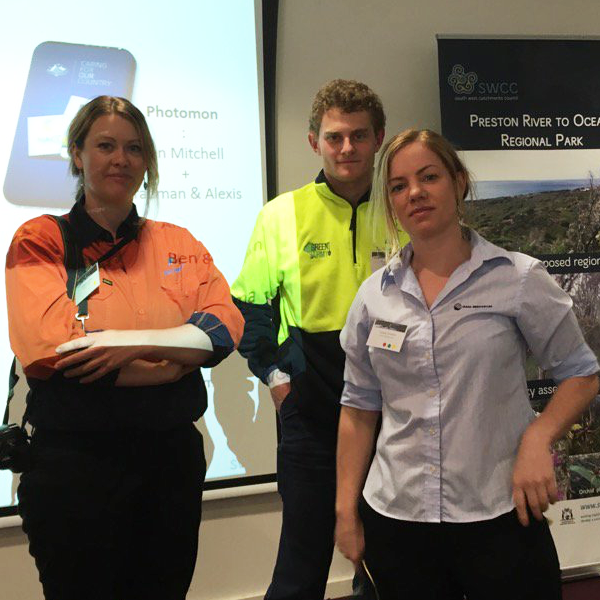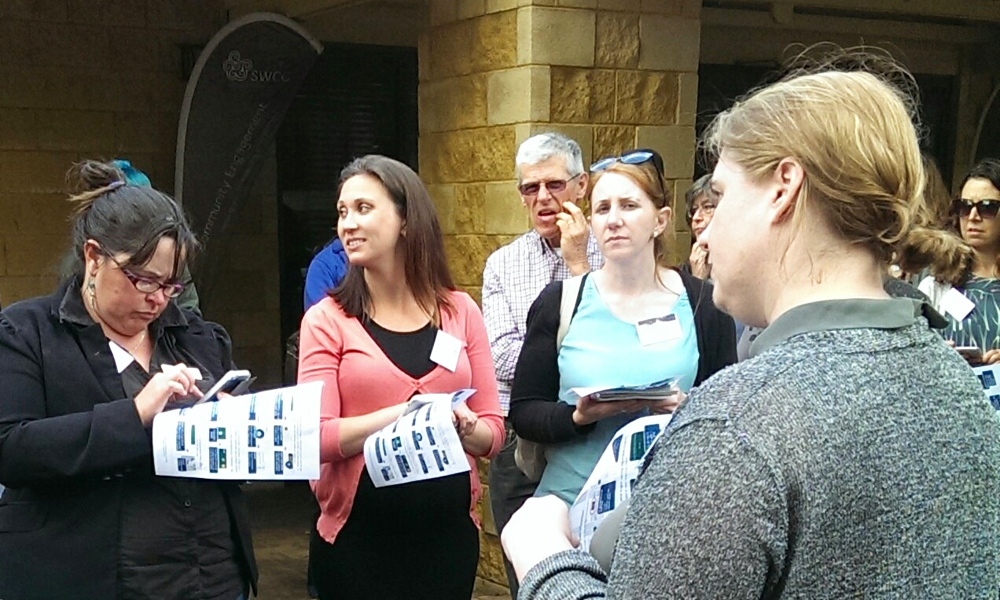Last week Alex and Tracey were in Margaret River running a #citizenscience session at the South West Catchment Council (SWCC) annual conference.
With over 120 participants, the conference was an intense couple of days filled with inspiring and stimulating presentations on innovative projects from highly-motivated speakers, interspersed with breaks for further brain-storming and the occasional coffee to keep the synapses firing!
Our particular session began with a brief introduction to Citizen Science and the levels of interaction projects might provide to engage contributors – including the volunteer contribution of time, the contribution of data, the reciprocal sharing of data, and active research collaboration between citizen and scientist.
The presentation then lead to a brief description of the four specific apps we would be focusing on in the subsequent training sessions, highlighting the purpose, engagement strategy and some outcomes from each. As the sun reappeared we divided up into four groups to head outside and spend 30 minutes using the app and fielding questions.

Tracey prepares to lead the Coastal Walkabout app training session, with Green Army volunteers Celeste and Alex
While Alex led a band of fifteen or so to find a suitable stand of Marri trees to discuss the science behind The Marri App and the methods the app provided for identifying, recording and contributing observations, Tracey took a group of around twenty-five to discuss the functionality of the Coastal Walkabout app. Each presenter was ably assisted by a few Green Army volunteers who had already downloaded and used the app.
Tamrika Lanoiselet (Department of Agriculture and Food WA) led the MyWeedWatcher session, which was the most popular topic with around fifty participants, illustrating the concern community members have about these invasive plants.
MyWeedWatcher enables users to identify weeds, conduct surveys on weeds of interest and report on the presence of declared weeds.

Tamrika Lanoiselet, from the Dept of Agriculture and Food, leading the training session on the MyWeedWatcher app
Jen Mitchell (SWCC) led the fourth session on Photomon, a smartphone app originally developed by the Northern Agricultural Catchment Council, which has been designed to improve the quality of data collected by environmental photo-monitoring programs. Around twenty conference participants were interested in finding out more about using this tool for their local area.
Of special interest throughout the conference was the focus on innovative methods for engaging with new sectors of the community, expanding the scope of projects using new techniques and opportunities, and sourcing new funding streams.
Each of these focal points was explored through the keynote presentations. For example Troy Mallie (Environmental Systems Solutions) discussed helping indigenous communities archive their knowledge through GIS and technology, Charlie Caruso (Puggle Media) focused on engaging Gen Y and creating cut through for your brand via social media, and Tom Dawkins (StartSomeGood) spoke at length on current trends in community building and crowdsourcing funds.
If you’d like to know more about citizen science, or whether a smartphone app is right for your project, please leave a comment below – or email me directly via alex.chapman@archive.gaiaresources.com.au.
Or, feel free to start a conversation with us via Facebook, Twitter or LinkedIn.
Alex, Tracey



Comments are closed.